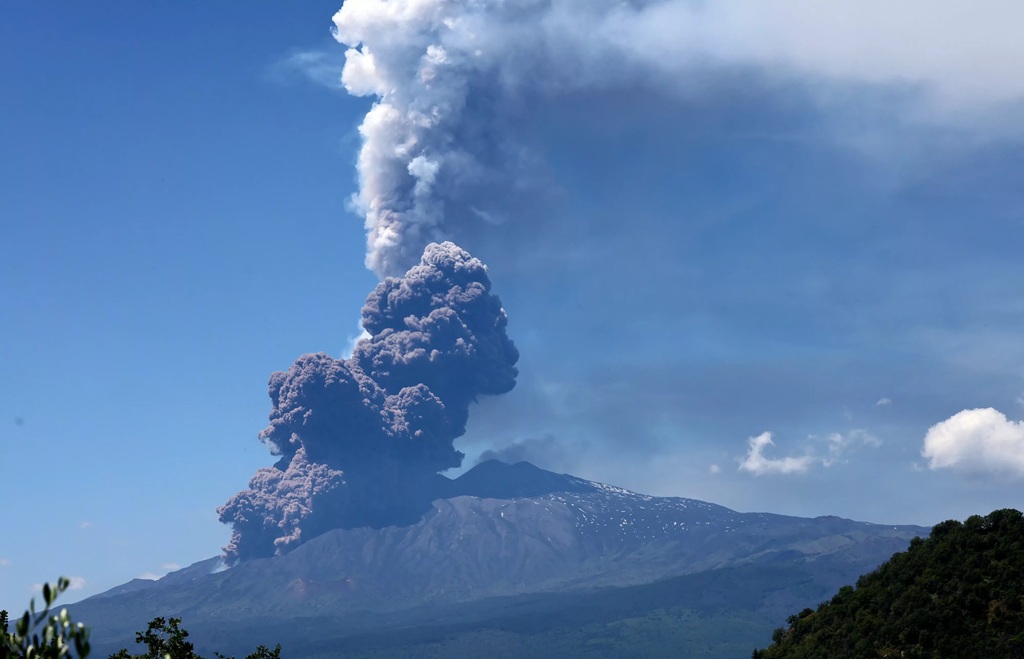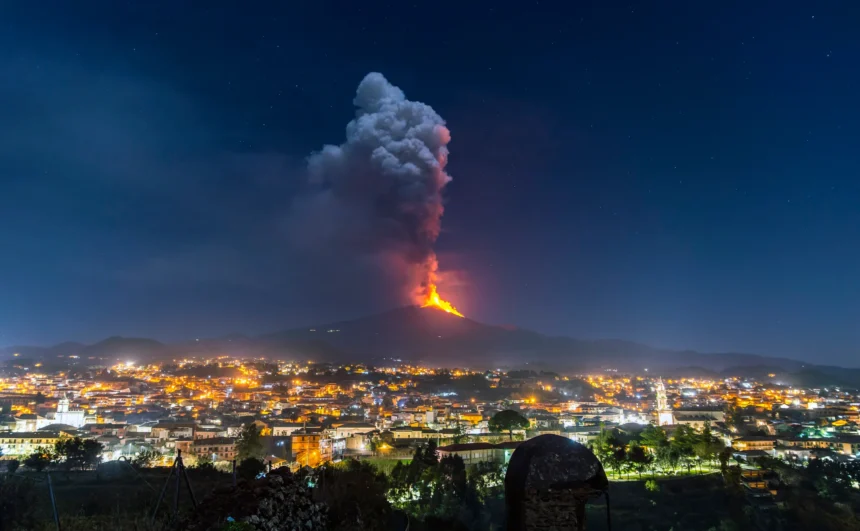SICILY, ITALY – Mount Etna, the tallest and most active volcano in Europe, erupted on June 2, 2025, lighting up the Sicilian sky with thick ash and gas. The eruption caught the attention of people both locally and around the world, as videos showed visitors hurrying down the slopes and a dark ash cloud visible even from the Ancient Theatre of Taormina, nearly 45 kilometres away.
News of the eruption also travelled far, reaching places like Chiang Rai, where volcanic activity is rare but stories of nature’s force feel familiar.
The first signs of trouble came just after midnight, with tremors reported by Italy’s National Institute of Geophysics and Volcanology (INGV). The eruption started at 3:50 AM near the southeast crater. By midday, a surge of hot rock, ash, and gas rushed down the volcano’s northern side, likely caused by part of the crater wall breaking away.
The ash cloud climbed to 21,325 feet, leading to a short-lived red alert for flights. Despite the dramatic scene, Catania–Fontanarossa Airport, Sicily’s busiest, kept most flights running since the ash blew west, away from the main population centres. Local officials reassured residents, noting that safety rules kept people away from the summit, a common measure on Etna.
Mount Etna Erupting June 2, 2025
Mount Etna rises 3,369 metres above the island’s east coast and is known locally as “Mongibello.” Its eruptions date back to 1500 BCE, making it one of the most well-documented volcanoes on Earth.
Over the last 3,500 years, Etna has erupted at least 186 times—roughly once every 19 years, though lately, it’s been more active. Its largest-known eruption in 122 BCE caused regional destruction. In 1669, a major eruption killed 20,000 people and left many without homes, with lava covering parts of Catania. In recent decades, Etna has had dramatic events, like the lava flows in 2001 and 2002–2003, and Strombolian explosions in 2015 and 2020.
The volcano has shown even more activity this year. In February, a 3-kilometre lava flow from the Bocca Nuova crater led to flight diversions at Catania Airport. Eruptions in April and May covered snowy slopes with ash and lava. The June 2 eruption added another chapter to Etna’s story, with a strong lava fountain that, while striking, did not put nearby towns in danger.

INGV specialists point out that Etna’s lava tends to move slowly, giving emergency services time to respond. Since the 1800s, no lava has reached populated areas, though ash often covers Catania and nearby villages—a mild annoyance for locals, but a memorable sight for visitors.
For Sicilians, Etna brings both benefits and challenges. Its slopes help produce excellent wine and fruit, and the volcano attracts visitors, supporting the local economy. But Etna can also be risky.
In 2024, an American tourist died while hiking on the southern slopes, highlighting the dangers for those who are unprepared. This year, new rules banned hiking near active craters and require guided tours to keep visitors safe. Social media has been filled with photos and videos of the eruption.
After the peak of the eruption, volcanic activity began to ease by late Monday. Sicily is adjusting once again, with airports busy and tourists eager to see Etna from a safe distance.
Source: National Institute of Geophysics and Volcanology (INGV)














